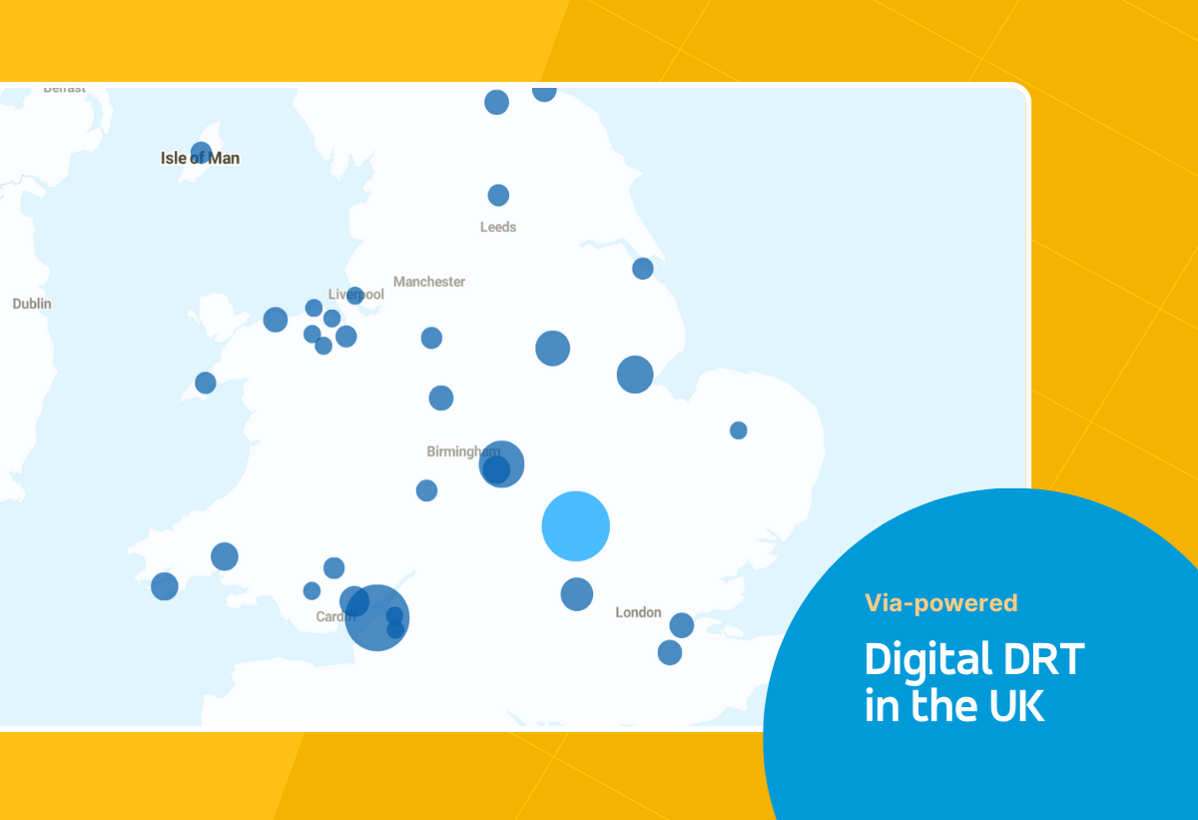The most common question about deploying digital demand-responsive transport (or DDRT) in the United Kingdom is, simply, ‘can it be a sustainable part of the transport mix in the long run?’ In short: Yes. The data shows clearly that DDRT is enduring well beyond any initial pilot funding indicating that local authorities are seeing the benefits that it provides as a way of meeting low or irregular transport demand and are accordingly finding ways to fund it. In fact, DDRT is an increasingly established, integral, part of mobility networks across many European countries with the UK being no different.
A recent data analysis reveals that more than 40% of Via-powered DDRT programs in the UK have a contract length of more than three years, with our current live projects now 25 months old on average dispelling the myth that DDRT schemes rarely make it past pilot stage.
Project longevity provides one proof point but so does project scope and there are a number of services that have grown significantly beyond their initial incarnation often incorporating new areas and new use cases in the process. Authorities including Transport for Wales (fflecsi), Transport for the West Midlands (West Midlands Bus On Demand), Milton Keynes (MK Connect) and Lincolnshire (CallConnect) have all decided to expand their DDRT services beyond the initial project as a way of better serving transport demand in their local areas and having seen the clear benefits delivered.
Increased accessibility, reduced congestion, and improved efficiency are all reasons to deploy DDRT but, the most common use case in the UK is as a gap filler where traditional fixed-route transport is not feasible or not as equitable as desired. “It’s supporting all of those people who don’t have cars of their own, or access to other forms of public transport who could feel alone and vulnerable, especially during the difficult past two years. It’s giving people a lifeline,” as Ben Houchen, Tees Valley Mayor, puts it.
While, undoubtedly, the public sector funding environment is tougher than ever, authorities who have progressed DDRT schemes beyond any initial competition funding have looked creatively and holistically at how transport is funded in their region — either redeploying existing subsidised bus spend or, in the case of Transport for the West Midlands, commingling use cases to create sustainability (merging their Ring & Ride and DDRT services together).
600+ cities and local authorities have done the trial and learning of building DDRT from scratch for you, so you don’t have to. To learn more about how this new mode can best serve and match the UK's new travel patterns, read here.

Data Journalist




